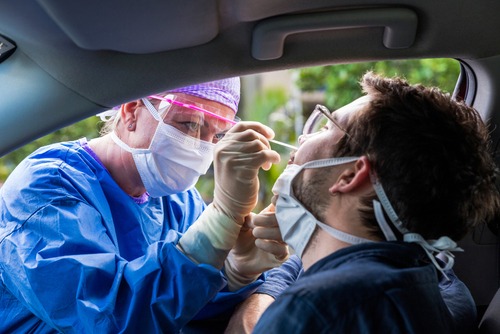
Where and when COVID-19 transmission rates are high, a new study published in The Lancet Public Health journal last week asserts that weekly testing and two week isolation periods for positive cases remain the most cost-effective ways to control spread.
This will remain the case until vaccines become widely available.
The study is the first to identify cost-effective strategies based on local transmission rates, testing and hospitalization costs, and society’s willingness to pay to prevent COVID-19 deaths. The findings also determined that when transmission rates are low to moderate, the most cost-effective approach becomes monthly testing and a mere one week isolation period. Even bumping things back to monthly testing is more cost-effective than the current reliance on testing only people demonstrating symptoms, as well as their contacts.
“Vastly expanding COVID-19 testing capacity in the US, and tailoring testing and isolation strategies depending on the local rate of transmission, has the potential to help deliver vital public health and economic benefits,” professor Lauren Ancel Meyers, of the University of Austin, said. “While the up-front costs of mass testing might seem high, our results show that this approach is a cost-effective way of saving lives and mitigating the unprecedented threats posed by the pandemic until many more people are vaccinated.”
Still, Meyers admitted the logistics of implementing mass testing could be challenging, and the authors admitted to limitations in their study. Without large amounts of tests, community acceptance of testing and isolation efforts, and coordinated distribution plans, any such policies would be doomed to failure.
Optimal testing strategies might not be logistically feasible everywhere, and the study only considered testing costs and loss of salary during isolation in its economic figures. It also did not consider the economic impact of preventing non-fatal illness or indirect health and mental health effects. Further, the study assumed people with COVID-19 could not be reinfected when there is no data as yet to determine long-term immunity.
The study was based on a model of 1,000 households scaled up to represent the millions of U.S. residents. Monthly testing would require 12 million tests per day.
“We hope our study will help to inform policies that make these strategies more feasible,” Ancel Meyers said.
Since the pandemic began, globally, more than 106 million cases and 2.3 million deaths have emerged. The estimated economic costs to the United States alone exceeded $21 trillion last year.




